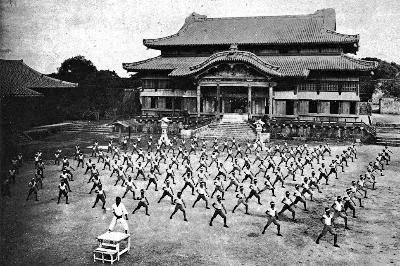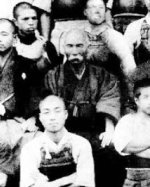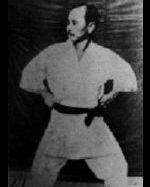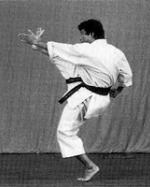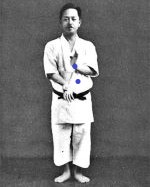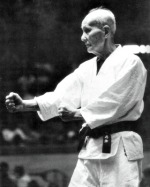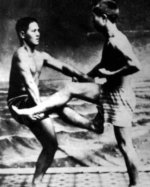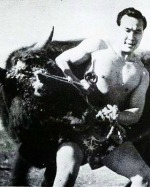The History of Okinawan Karate
Talk the Talk
The term karate (empty hand) did not come into common usage until 1936 when it was changed by Gichin Funakoshi.
Prior to that, Okinawan martial arts were generally
known as Te (Hand) or Tode (Chinese Hand).
Funakoshi made the change in an attempt to make the art more marketable to the Japanese, who at the time tended to
hate all things related to China.
Walk the Walk
It is rumoured that Anko Itosu was once challenged to fight the Japanese judo champion to demonstrate Okinawan karate.
He turned up and to the astonishment of the Japanese
crowd, dropped the champ with a body punch.
After helping his opponent to regain his breath, Itosu bowed respectfully and went home.
Karate Quote
According to the early Okinawan martial arts master Bushi Matsumura, there are seven virtues of Bu (military mind) which are:
1. Bu prohibits violence
2. Bu keeps discipline in soldiers
3. Bu keeps control among the population
4. Bu spreads virtue
5. Bu gives a peaceful heart
6. Bu helps keep the peace between people
7. Bu makes people or a nation prosperous
~ Sokon ‘Bushi’ Matsumura ~
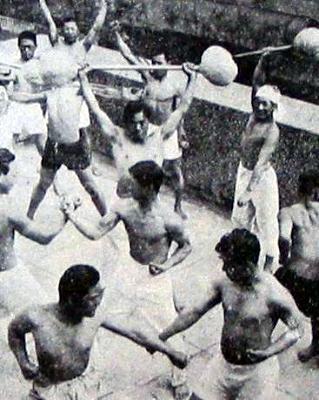
Traditional karate is studied worldwide by millions of people and is considered by many as the best martial art available as it is suitable for people of all ages, ability levels and body types. However Okinawan karate was developed in secret up until relatively recently, with only a privileged few being taught the techniques that are said to promote not only fighting prowess, but also good health and longevity of life.
Influences on Okinawan Karate
Many historians trace Okinawan karate history, and indeed the history of the martial arts in East Asia to Bodhidharma, the Indian Buddhist monk who travelled to China in around 500 CE. He stayed at the Shaolin Temple where he is said to have taught the monks an ancient form of Indian martial arts known as vajramushti, which dates back to around 1000 BCE. From there it grew and developed into what we now know as kung fu and spread right throughout China.
Over the centuries, it is believed that Chinese martial artists visited Okinawa and passed on their knowledge, as did many Japanese samurai who also held great influence on the island. Over time this, combined with home-grown techniques, led to the development of a distinct Okinawan martial art known as Te, (meaning Hand) or Tode (meaning Chinese Hand). From 1609, Okinawa was run by the Satsuma samurai clan from Japan and under their rule, weapons and martial arts in general, were banned. All those who chose to practice Te had to do it in secret or risk punishment from the authorities and the lack of weapons led to the development of many empty-handed techniques (though the use of some weapons was still practiced).
As a result of the need for secrecy, very little was written down about the martial arts in Okinawa pre-twentieth century and much of what was documented unfortunately has not survived, leaving exactly what they practiced a mystery. Much of what is accepted as karate history fact comes from an oral tradition making it very difficult to know where the truth ends and martial arts legend begins.
Okinawan Karate Styles
Te had three main styles that were named after the cities in which they developed, Shuri-te, Naha-te and Tomari-te. Two main schools of Te emerged by the nineteenth century, Shorin-Ryu which was developed from the Shuri and Tomari styles and Shorei-Ryu, which came from the fighting style practiced at Naha.
It should be remembered that the cities were all within a few miles of each other and the styles had many similarities; the main differences were of emphasis and according to Gichin Funakoshi who studied both, they were developed based on different physical requirements. Shorin-Ryu was a quick, linear art that taught natural breathing whereas Shorei-Ryu was more rooted and practised breathing synchronised with each movement. According to Funakoshi, both styles also have links to Wu-Tang and the Shaolin, which are both styles of kung fu.
Okinawan Karate History and the Meiji Restoration
In the mid-1800s, Okinawa was in turmoil due to the end of the old Samurai ways in Japan and the onset of the Meiji Restoration, where the emperor once again ruled. They found themselves caught between the national interests of China, (to who they had previously paid joint tribute), Japan and America. The Okinawan king and his government were disbanded and made to become commoners, the whole city of Shuri saw mass unemployment and the forefathers of karate found themselves moving from being of the higher social class to a state of abject poverty.
Sokon ‘Bushi’ Matsumura, a military officer who was responsible for the safety of the Royal Family prior to the Meiji Restoration was instrumental in the development of Shorin-Ryu, along with his student Anko Itosu. These were dangerous times for the nobility of the island but they were not permitted to carry weapons. It was around this time that Bushi Matsumura and Itosu are believed to have developed the hard style that focused on rendering an opponent unconscious with very few techniques. This replaced the submission holds, grappling and light rapid techniques of kung fu that preceded them and is believed to be the first time a style was practised that closely resembles modern Shotokan karate.
Until the early twentieth century, the Okinawan masters trained in secret, spending three years on each kata and training extensively on a makiwara board; sparring as we know it today was not practised though karateka would often challenge each other to fights to test their skills. Then in around 1905, Anko Itosu took the art out of secrecy and managed to get the authorities to allow him to start a program of teaching karate in the local schools.
This was one of the most significant acts in the history of Okinawan karate and brought in a new era of growth that would ultimately see it go from a secretive martial art taught only to the privileged few on a small island, to being a worldwide phenomenon with ever-increasing numbers of participants by the middle of the twentieth century.
Written by Andrew Griffiths – Last updated 26/07/2023. If you like
what you see, consider following the History of Fighting on social media.
Further Reading:
A Brief History of Karate-Do. [Internet]. 2012. The University of Hawaii. Available from: http://www2.hawaii.edu/~uhkarate/history.html [Accessed 13 November 2012].History of Karate from Ancient Combat System to Modern Global Phenomenon. [Internet]. 2012. Dynamic Karate. Available from: http://www.dynamic-karate.com/history-of-karate.html [Accessed 13 November 2012].
History of Shotokan Karate. [Internet]. 2012. Northwestern University. Available from: http://groups.northwestern.edu/karate/history.html [Accessed 13 November 2012].
Matsumura’s 1882 Letter. [Internet]. 2010. Okinawan Karate-do Institue. Available from: http://okiblog.com/2010/06/matsumuras-1882-letter [Accessed 13 November 2012].
Shotokan’s Secrets. [Internet]. 2004. Via Google Books. Available from: http://books.google.co.uk/books?id=BGxQeTMnPzQC&printsec=frontcover&dq=shotokan%27s+secret&hl=en&redir_esc=y [Accessed 13 November 2012].
More Karate History
Karate History Home
The history of karate begins in Okinawa, where martial arts were influenced by both kung fu from China, and the Japanese samurai. After weapons were banned on the island, unarmed combat techniques were developed into a style of fighting recognisable as traditional karate, which was further developed after being taken to Japan in the early twentieth century by Gichin Funakoshi.
The history of karate begins in Okinawa, where martial arts were influenced by both kung fu from China, and the Japanese samurai. After weapons were banned on the island, unarmed combat techniques were developed into a style of fighting recognisable as traditional karate, which was further developed after being taken to Japan in the early twentieth century by Gichin Funakoshi.
The Life and Legends of Anko Itosu
Anko Itosu was a legendary Okinawan martial artist and a pioneer in the development of karate history. He popularised many aspects of the fighting system through his Shuri-te style and helped increase the number of people who were permitted to learn it by bringing karate training out of secrecy, and even gained permission to teach it in Okinawan schools.
Anko Itosu was a legendary Okinawan martial artist and a pioneer in the development of karate history. He popularised many aspects of the fighting system through his Shuri-te style and helped increase the number of people who were permitted to learn it by bringing karate training out of secrecy, and even gained permission to teach it in Okinawan schools.
Gichin Funakoshi - Father of
Modern Day Karate
Gichin Funakoshi was born in Okinawa in 1868 and is known as the father of modern-day karate due to the innovations he made to Okinawan martial arts when he took it to Japan and popularised it with the people there. Not only did he found Shotokan karate, but he was also instrumental in spreading karate across the world.
Gichin Funakoshi was born in Okinawa in 1868 and is known as the father of modern-day karate due to the innovations he made to Okinawan martial arts when he took it to Japan and popularised it with the people there. Not only did he found Shotokan karate, but he was also instrumental in spreading karate across the world.
The History of the Shotokan Kata – Part One
A look at the history of the more basic Shotokan kata, including their origins, development, interesting facts and scholastic debate. This list of kata histories includes, Kihon kata, the Heian kata, the Tekki group, Bassai Dai and Sho, Empi, Hangetsu, Kanku Sho and Dai, Jion, Ji’in and Jitte and includes video links to the relevant kata.
A look at the history of the more basic Shotokan kata, including their origins, development, interesting facts and scholastic debate. This list of kata histories includes, Kihon kata, the Heian kata, the Tekki group, Bassai Dai and Sho, Empi, Hangetsu, Kanku Sho and Dai, Jion, Ji’in and Jitte and includes video links to the relevant kata.
The History of the Shotokan Kata – Part Two
A look at the history of the more advanced Shotokan kata, including their origins, development, interesting facts and debated issues. This list of karate kata histories includes, Wankan, Gankaku, Meikyo, Chinte, Gojushiho Sho and Dai, Sochin, Nijushiho and Unsu, and includes video links to the relevant kata.
A look at the history of the more advanced Shotokan kata, including their origins, development, interesting facts and debated issues. This list of karate kata histories includes, Wankan, Gankaku, Meikyo, Chinte, Gojushiho Sho and Dai, Sochin, Nijushiho and Unsu, and includes video links to the relevant kata.
Kenwa Mabuni – Founder of Shito-Ryu Karate
Kenwa Mabuni started life as a sickly child but transformed himself into a strong warrior through the practice and dedication to the martial arts. Through his studies with
great karate masters such as Anko Itosu and Kanryo Higaonna, along with the kung fu master Woo Yin Gue, he was able to combine what he had learned and develop one of the four
major styles of traditional karate, Shito-Ryu.
Hironori Otsuka – Founder of Wado-Ryu Karate
Hironori Otsuka was a renowned master of jujitsu by the age of 28 before becoming a karate student under Gichin Funakoshi. He excelled and quickly rose through the ranks to become an assistant instructor, helping to develop training techniques in Shotokan karate. Later, Master Otsuka would brake away and form Wado-Ryu, one of the main four styles of traditional karate.
Hironori Otsuka was a renowned master of jujitsu by the age of 28 before becoming a karate student under Gichin Funakoshi. He excelled and quickly rose through the ranks to become an assistant instructor, helping to develop training techniques in Shotokan karate. Later, Master Otsuka would brake away and form Wado-Ryu, one of the main four styles of traditional karate.
The Real Mr Miyagi – Founder of Goju Ryu
Sensei Chojun Miyagi was an early karate master who studied martial arts in both China and his homeland, Okinawa. He earned his place in martial arts history when he used his knowledge to blend soft (or internal) with hard (or external) techniques to develop the style known as Goju-Ryu, which is considered one of the main four styles and is today widely practiced throughout the world techniques.
Sensei Chojun Miyagi was an early karate master who studied martial arts in both China and his homeland, Okinawa. He earned his place in martial arts history when he used his knowledge to blend soft (or internal) with hard (or external) techniques to develop the style known as Goju-Ryu, which is considered one of the main four styles and is today widely practiced throughout the world techniques.
Mas Oyama – Founder of Kyokushin Karate
Mas Oyama, founder of Kyokushin karate was one of the best karate masters of all time. He developed his body, mind and techniques through rigorous training and fought and won hundreds of full contact battles against fighters from many different martial arts styles. To test his skills further, he also went head to head with 52 bulls and was victorious in all, whether against man or beast.
Mas Oyama, founder of Kyokushin karate was one of the best karate masters of all time. He developed his body, mind and techniques through rigorous training and fought and won hundreds of full contact battles against fighters from many different martial arts styles. To test his skills further, he also went head to head with 52 bulls and was victorious in all, whether against man or beast.
The images on this site are believed to be in the public domain, however, if any mistakes have been made and your copyright or intellectual rights have been breeched, please contact andrew@articlesonhistory.com.

